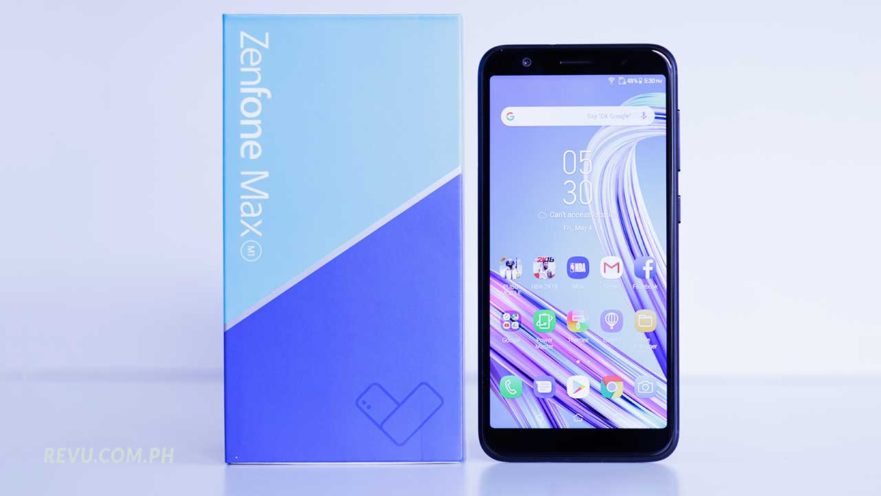ASUS Philippines is proving it’s finally on the right trajectory following the warm reception to its ZenFone 5Q and ZenFone 5 in the country.
Still, there’s more work to be done, more mobile devices to ship, particularly in the bargain basement where even the biggest names in the business are strapping their boots and getting dirty. For many manufacturers, this is the next frontier to conquer, and this is where the ASUS ZenFone Max (M1) comes in.
SEE ALSO: ASUS ZenFone 5Z, ZenFone 5 now official in the Philippines
It’s approachable and compact, easy to use on the go; it brings some of the hottest features that people look for in a smartphone; and importantly, it doesn’t cost much to own. The ZenFone Max (M1) has been priced at P8,995 (approximately $174) in the domestic market, and will be available for purchase in black and gold metallic finishes.
Maybe the first thing anyone notices about the ASUS ZenFone Max (M1) is that it’s an absolute joy to hold, sort of like the regular iPhone. The footprint and thickness is just right to wrap your fingers around. And you don’t miss a lot of screen space because of the screen’s 18:9 aspect ratio and slimmer bezels.
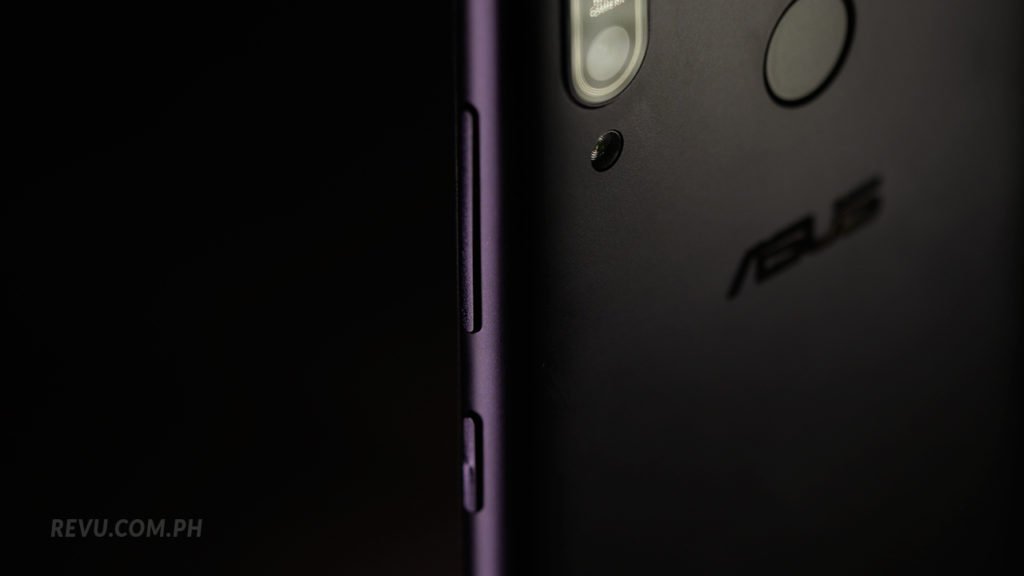
The ASUS ZenFone Max (M1)’s footprint and thickness is just right to wrap your fingers around.
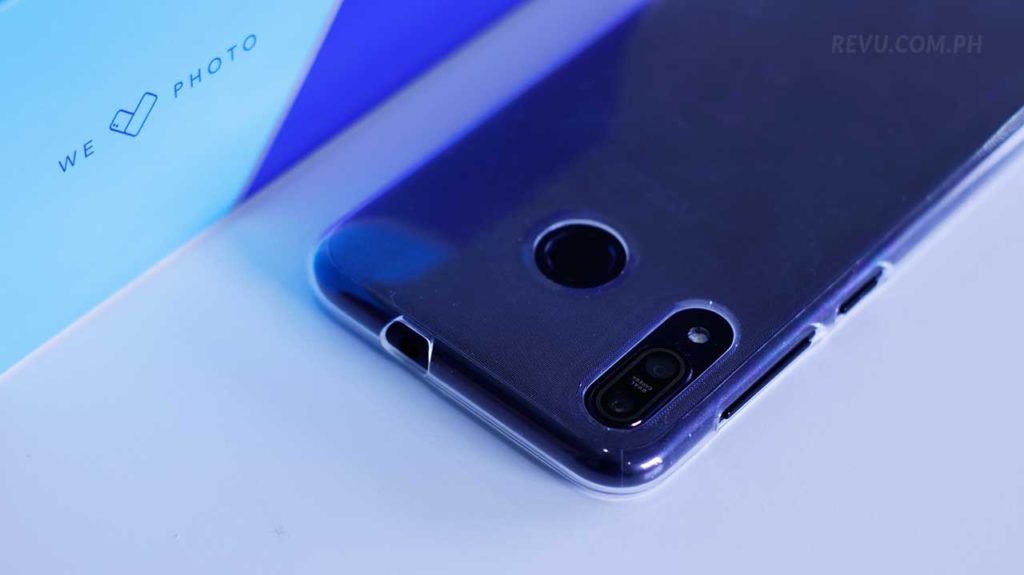
Inside the box are the following: TPU case, earphones, charger, cable, SIM-eject tool, and manuals.
The back cover is made of seemingly durable plastic, and its sides curve toward the front panel, which not only allows for a natural feel in the hand, but also helps counter the slipperiness of the finish. There are iPhone-inspired antenna lines at the top and bottom of the device; they’re painted lighter than the rest of the body, complementing it nicely rather than sticking out awkwardly.
READ ALSO: ASUS ZenFone 5Q, ‘1st real quad-camera phone,’ debuts in the Philippines
The fingerprint scanner can also be found at the rear, and it works about as well as other sensors we’ve used on comparable devices. ASUS offers facial recognition as an alternative security option, although it’s largely a hit-or-miss affair, particularly in the dark. We recommend sticking with fingerprint authentication instead, or until ASUS releases a patch to improve its face-unlock implementation.
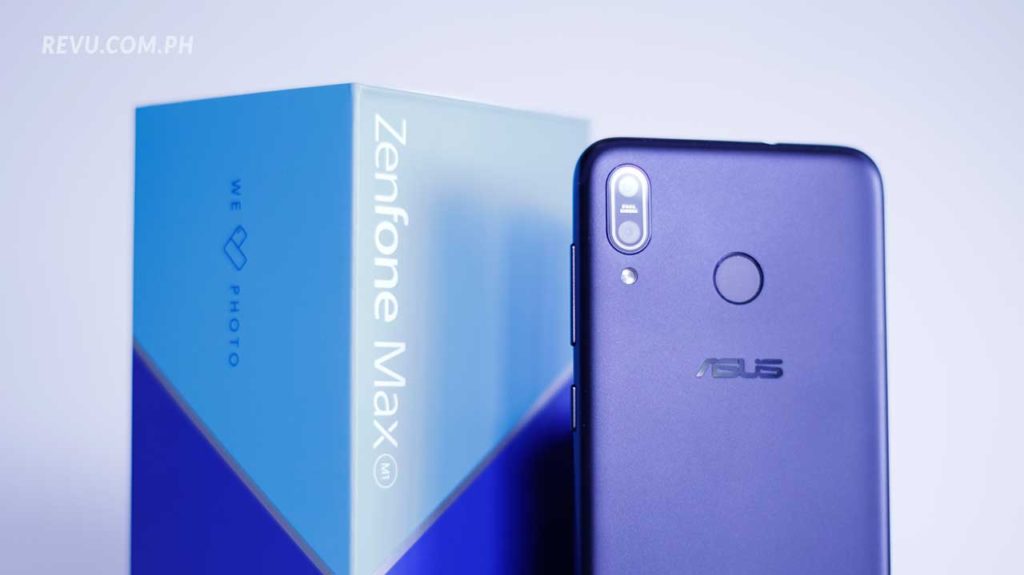
The ASUS ZenFone Max (M1)’s fingerprint sensor can be found at the rear, and it works about as well as other scanners we’ve used on comparable devices.
Moving to the right side of the body, you’ll find the volume and power buttons, with the latter rocking a bit of texture, so you can distinguish it by touch alone. The up-and-down volume rocker is comparably longer than that of most other phones, thus making it easier to find and press.
The SIM and dedicated SD card slots are tucked into the right side of the frame. Moreover, the ASUS ZenFone Max (M1) can fit two SIM cards at the same time without sacrificing extra storage space. There’s a headphone jack up top, while the bottom houses the mono speaker and microUSB port for charging and data transfer.
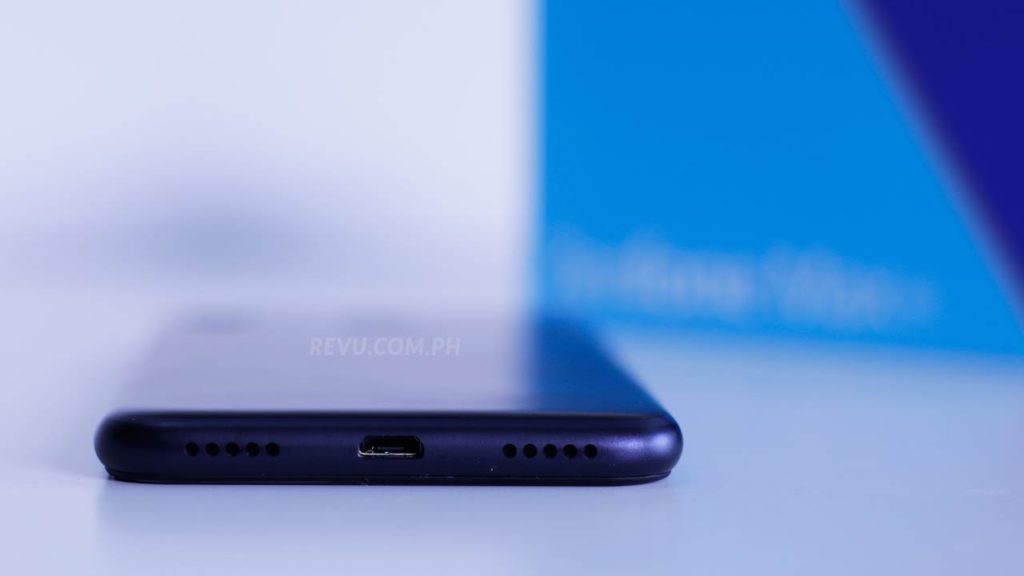
The bottom of the ASUS ZenFone Max (M1) houses the mono speaker and microUSB port for charging and data transfer.
Switching over to the front, the display is layered with curved-edge glass for better ergonomics. It’s 5.5 inches across, with a 1,440 x 720 resolution. The taller screen looks quite nice for the price — good colors; wide viewing angles; works decent outdoors.

The ASUS ZenFone Max (M1)’s tall display looks quite nice for the price — good colors; wide viewing angles; works decent outdoors.
It supports glove mode, too, to make the phone easier to operate with regular gloves on during the colder months. But unlike previous ASUS models, the ZenFone Max (M1) doesn’t offer the option to tweak its color profile or activate night mode or blue-light filter for the display.
For photography, the phone is equipped with two cameras around the back — 13- and 8-megapixel sensors sit next to each other in a horizontal position.
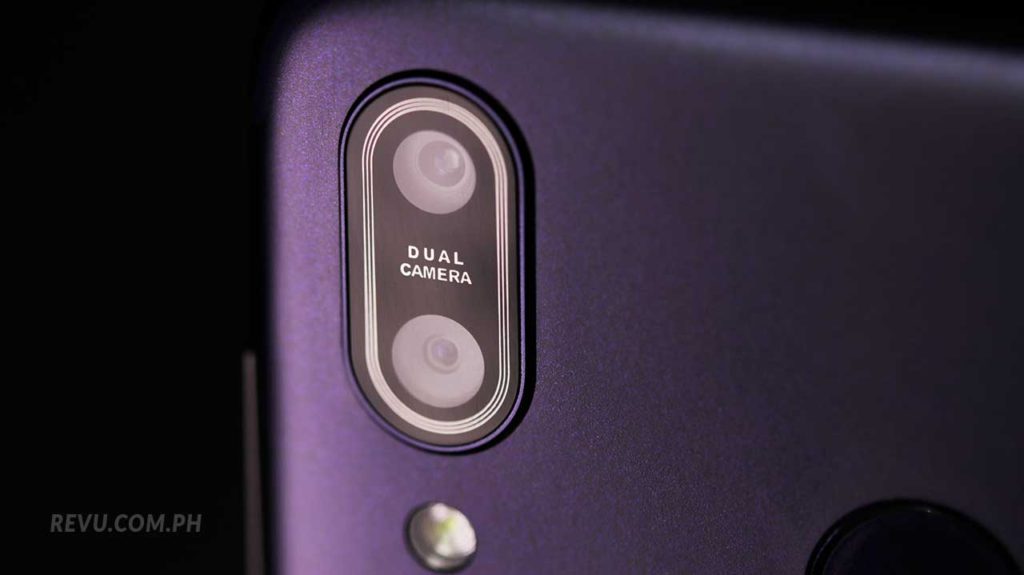
The ASUS ZenFone Max (M1) is equipped with two cameras around the back.
Impressively, the 8-megapixel snapper isn’t there for simply capturing depth information and then feeding it to the main camera; it functions as a standalone shooter with a wide-angle lens for some rather interesting results, albeit at the expense of sharper details and punchier colors. It pulls way back, snapping away with a 120-degree field of view.

ASUS ZenFone Max (M1): Sample regular shot
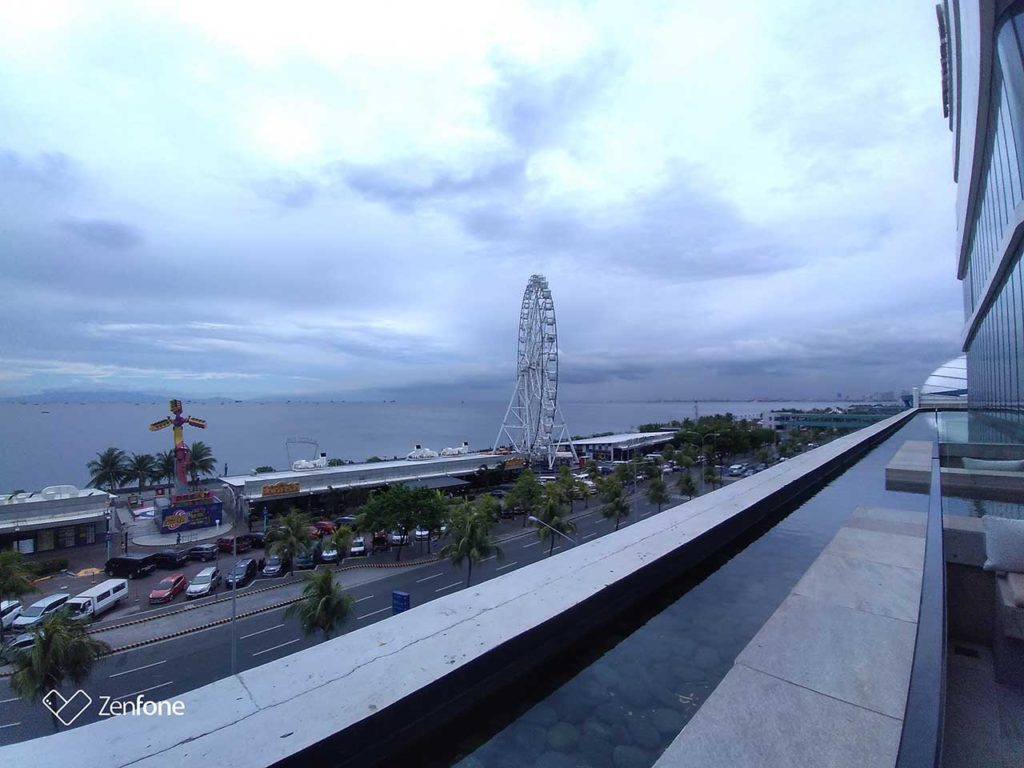
ASUS ZenFone Max (M1): Sample wide-angle photo
The front-facing camera features a 13-megapixel sensor as well. Most of the selfies we took look okay, sufficiently bright and crisp. Portrait mode is available from both ends, although the results we’ve seen so far need more work.

ASUS ZenFone Max (M1): Sample selfie in auto mode

ASUS ZenFone Max (M1): Sample selfie with bokeh effect
As with last year’s ASUS ZenFone 4 Max, one of our top choices last year, a Qualcomm Snapdragon 430 is fitted inside to power the device. It’s also coupled with 3GB of RAM and 32GB of expandable storage.
SEE ALSO: New NBA 2K Mobile game is a lot like NBA 2K18, but free
They’re really neither bad or good at this price, but it’s important to note that this thing can multitask without killing most apps in the background and play heavier games like NBA 2K18. The popular basketball game for Android, as we found, can run at acceptable frame rates at medium detail on the ZenFone Max (M1).
The latest edition of the Antutu Benchmark app reported 56,948 points (higher is better) after an initial run.

The ASUS ZenFone Max (M1)’s Antutu and Geekbench benchmark scores
Up-to-date and secure Android 8.0 Oreo ships with the device, and it’s layered with ASUS’ own software touches. And while we don’t agree with everything going on in the interface, props must be handed to the company for leaning toward a stock experience and incorporating Google Assistant in the home screen. You can even add any third-party icon pack if you have one installed.
READ ALSO: New ASUS ZenFone Max Pro M1 undercuts Xiaomi Redmi Note 5 Pro
Of course, one of the main attractions here is the 4,000mAh battery under the back cover. ASUS quotes up to 41 days of standby time, up to 16 hours of video playback, and up to 23 hours of web browsing while connected to a Wi-Fi network.
Those metrics look exciting, and we’ll be sure to put this phone through its paces to get some real-world observations. We’ll focus more on the battery in our review. Charging the battery takes three hours, per ASUS, using the supplied 10-watt wall adapter.
The ASUS ZenFone Max (M1)’s main attraction, being part of the Max lineup, is the 4,000mAh battery under the back cover. ASUS quotes up to 41 days of standby time, up to 16 hours of video playback, and up to 23 hours of web browsing while connected to a Wi-Fi network.
Final thoughts
The new ASUS ZenFone Max (M1) is a nice all-around effort for those after a smaller footprint and a price that won’t raise eyebrows. Its super-wide camera is a welcome feature, and if the battery mileage is as good as advertised, we could be looking at another budget blower worth considering.
ASUS ZenFone Max (M1) specs
- 5.5-inch LCD display, 1,440 x 720 resolution (18:9)
- Octa-core Qualcomm Snapdragon 430 processor
- 3GB RAM
- 32GB expandable storage
- Dual 13-megapixel and 8-megapixel rear camera with LED flash
- 13-megapixel front camera
- 4,000mAh battery
- Android 8.0 Oreo
Share this Post


